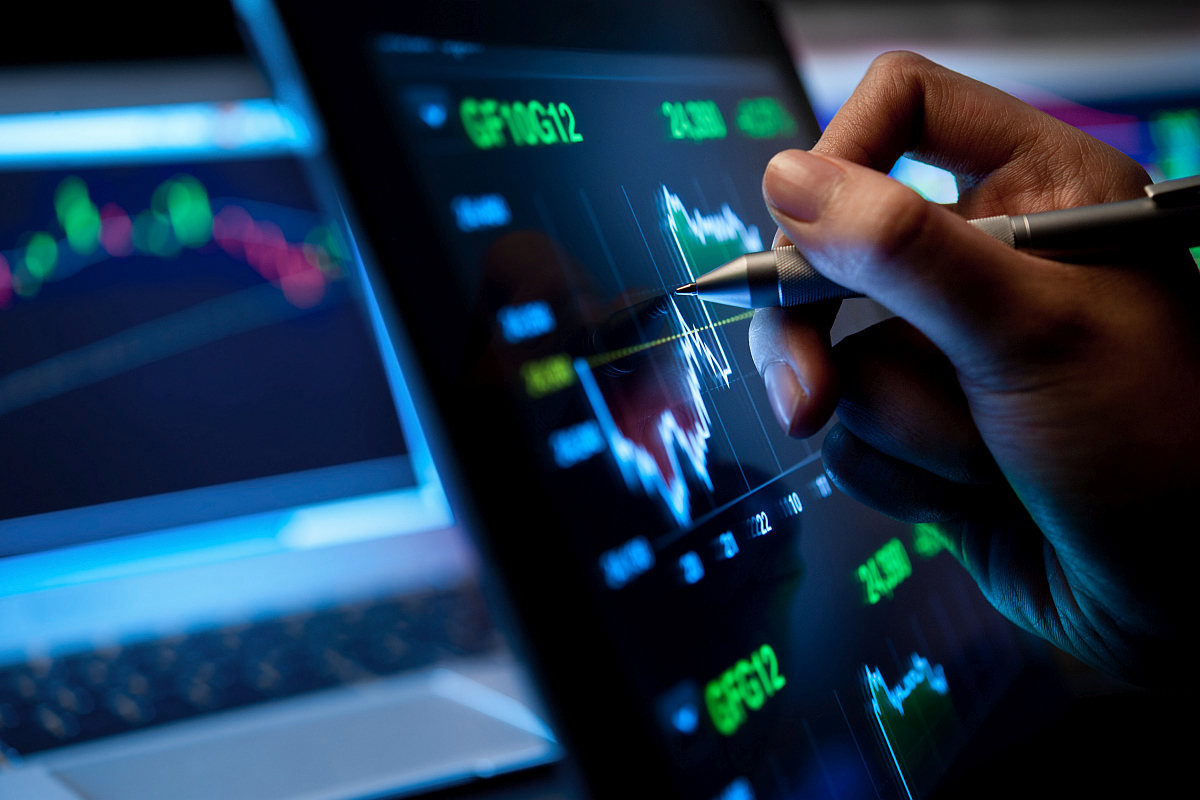Stock market bounces back; banks, metals shine
Sensex was up 599.34 points, or 0.83 per cent at 73,088.33, while the Nifty was up 151.20 points or 0.69 per cent at 22,147.
The first technological transition of Dalal Street (BSE) came in the form of an electronic trading system in 1995, or a year after the launch of the National Stock Exchange (NSE)

Data, as now is popularly known, is the new oil and gold. (Photo: iStock)
Digitisation has today transformed everything around us. From entertainment to daily payments, from food ordering to booking of tickets for travel, our every basic need is gradually going digital. Well, the touch-of-a-button experience is so far so good. Thankfully, the benefits of digitisation are also being realized within the trading industry. But how is this change beneficial to the traders? Let us try and understand.
The Conventional Design: So, what has digitisation changed?
If you’ve started trading of late, you should be glad to have not faced the issues that existed before. Back in the day, everything was largely haywire. Exchanges were synonymous with the outcry of eager traders booking prices over the phone. Stocks were limited and even less used to be available with a particular broker. But that is if you were registered as a trader and had access to Dalal Street. It was a task in itself. Usually, it used to take couple of days to get done with everything including trading and Demat account. This was also the time when Chinese whispers made you shell out your stocks when you ideally should’ve held.
Advertisement
The first technological transition of Dalal Street (BSE) came in the form of an electronic trading system in 1995, or a year after the launch of the National Stock Exchange (NSE). The changeover enabled BSE to take up to 8 million orders per day. NSE had a fully automated screen-based electronic trading system, to begin with. The novel approach considerably decreased the overall turnaround time. It also had a positive impact vis-à-vis human errors and omissions which were a frequent nuisance in trading. Online trading was commenced with the dawn of the new millennium. It added to those recent advantages.
The biggest benefit of these changes was perhaps realised by the intra-day traders, who no longer needed to call their brokers. The volume of day trades increased and has maintained an upward trajectory ever since. Today, Intraday contributes around 65% of daily cash volumes. The online shift also extended the reach of stock markets to urban Indian households. The market grew strongly and so did the profits of all traders.
The Modern Scenario: How recent tech infusions are further driving paradigm shifts?
The benefit of the internet was not limited to stock purchases. It also added to the research. The investors could now search for stocks, see historic trends, and conduct in-depth analysis. The internet also made it easier to receive insights and advice from industry veterans. But the real industry game-changer was yet to come.
Data, as now is popularly known, is the new oil and gold. Well, stockbrokers have known always known this fact. Predictive analytics based on regression models were used by stockbrokers. It helped them in extending accurate trading advice to their clients. However, the approach gradually started going digital. With it, precision sharply enhanced. Today, everything from tech-driven Data Analytics to Artificial Intelligence has been accommodated to this approach.
Industry-leading robo-advisories analyse as much as 1 billion data points before extending advice. To offer you better contrast, if a person is able to analyse one data point every second (something that is highly unlikely), it will take them more than 31 years to be so precise. And, this is for a single trade. Broking platforms have also launched dedicated rule-based investment engines based on Nobel-Prize-winning ‘Modern Portfolio Theory’ for personalised recommendations. The advantage? Investors always reap index-beating returns. Well, in terms of stocks, the difference is generally more than 25% against BSE 100. On the Mutual Fund front, it is typically 1-2% against the benchmark index.
Obviously, these modern digital approaches have helped a large chunk of retail investors to cross several barriers to entry – the biggest of them being the ‘market awareness’. So, more investors from tier 2 and 3 cities are now joining the flock. The change is good and will only get better with time!
Prabhakar Tiwari, CMO, Angel broking Ltd.
(This story has not been edited by The Statesman staff. The views expressed here are those of the authors and do not necessarily represent or reflect company’s view.)
Advertisement